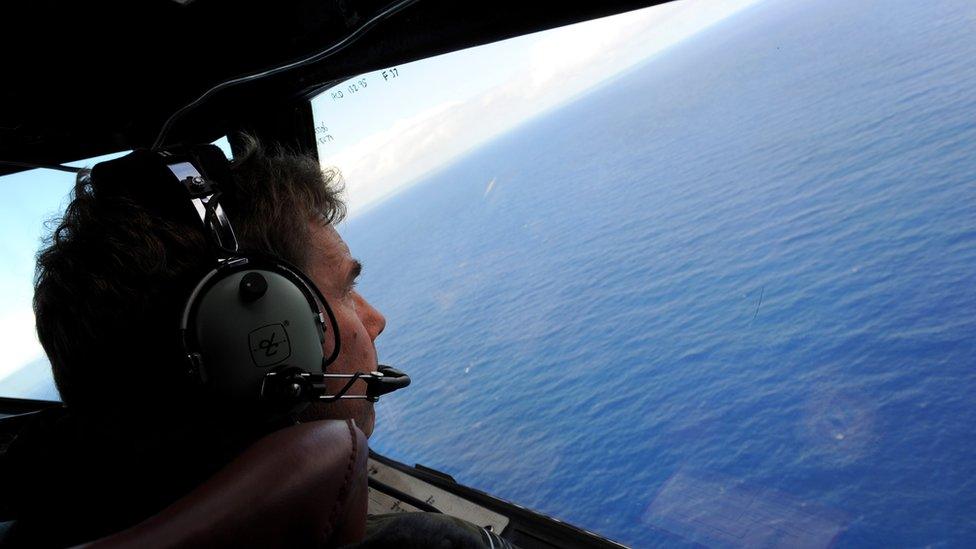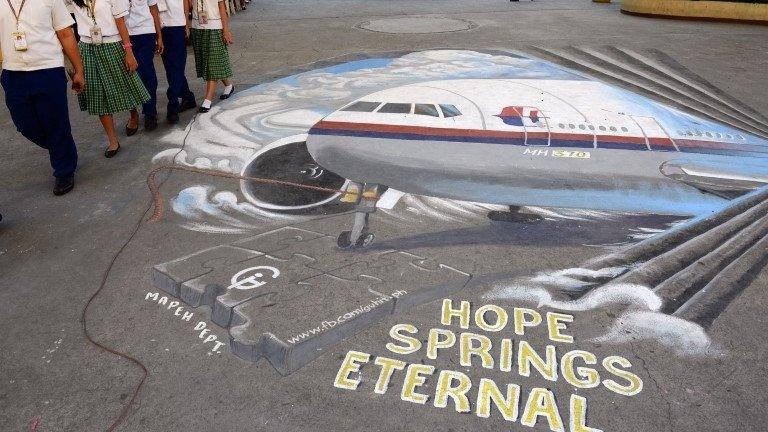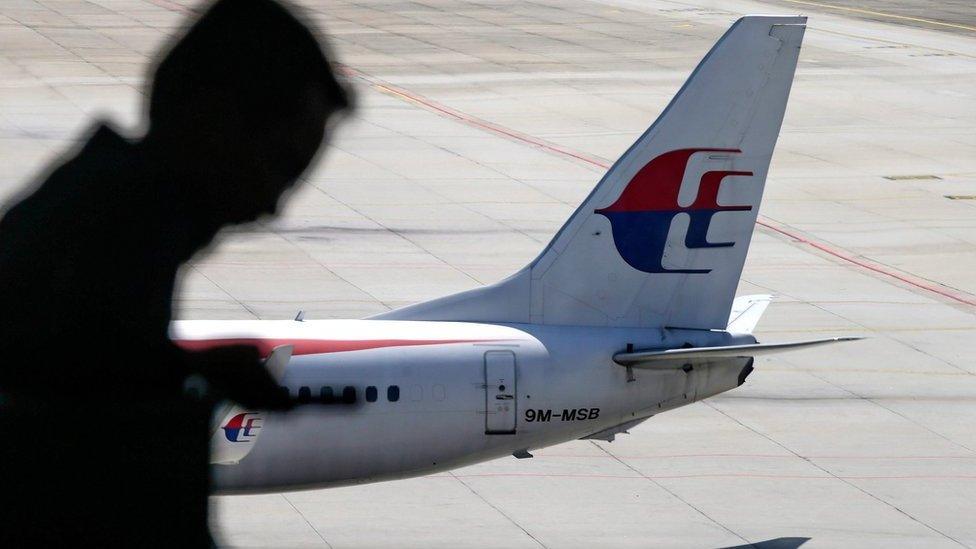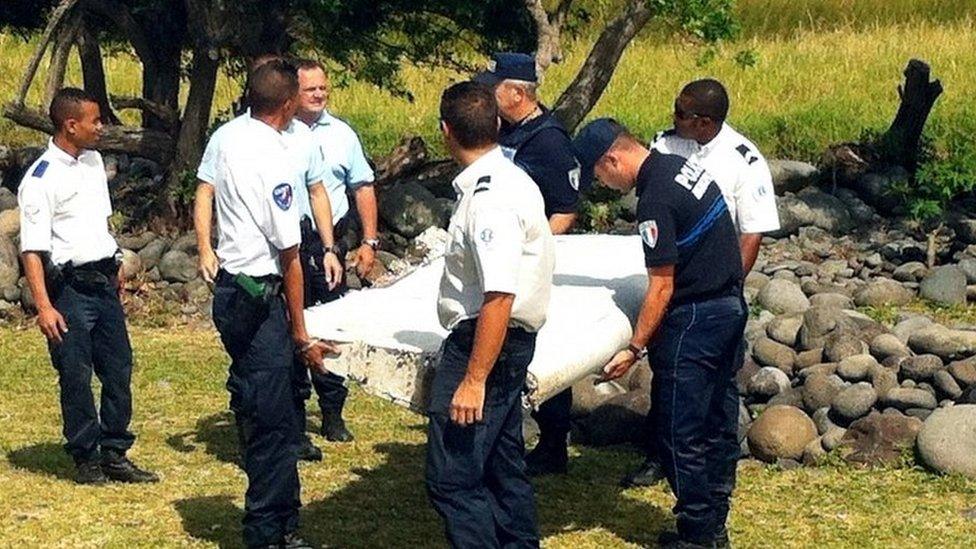Cardiff uni sound wave research to help find missing planes
- Published

The search for flight MH370 was suspended in January
Underwater sound waves could be used to help locate planes that go missing at sea, research has found.
Wanting to learn about the fate of the Malaysia Airlines Flight MH370, a team from Cardiff University developed a method using underwater microphones to pinpoint the time and location that objects fall into the ocean.
They located two "weak signals" on the MH370's flight path in 2014.
But they cannot say if they have any association with the missing aircraft.
The Boeing 777 aircraft had 239 people on board and was travelling from Kuala Lumpur to Beijing on 8 March 2014 when air traffic control lost contact.
A 52 day surface search covered an area of several million square miles in the Indian Ocean west of Australia, before an underwater search mapped 274,000 square miles (710,000 sq km) of seabed at depths of up to 20,000ft (6,000m).
But it failed to uncover the fate of flight and the search was suspended in January.

Flight MH370 was carrying 239 people when it disappeared in 2014
The team at Cardiff University developed a method using the measurement of acoustic gravity waves (AGWs) which occur naturally and move through the deep ocean.
When objects hit the sea surface they cause a sudden change in water pressure which leads to the generation of AGWs.
The team said as well as helping to find missing planes, it could be used to locate meteorites and satellites, as well as underwater explosions, landslides or the epicentres of earthquakes at sea.
Using their method, they found two "remarkably weak signals" from an unknown source in the Indian Ocean around the time of the MH370's disappearance.
But Dr Davide Crivelli from the university's school of engineering could not say "with any real certainty" if they have any association with the MH370.
'Huge possibilities'
"All of this information has been passed on to the Australian Transport Safety Bureau and we anticipate that both now, and in the future, this new source of information could be used in conjunction with a whole host of other data," he said.
Dr Usama Kadri from the university's school of athematics, described it as a "completely novel way of locating objects impacting on the sea surface".
"Tracking these acoustic gravity waves opens up a huge range of possibilities, from locating falling meteorites to detecting landslides, snowslides, storm surges, tsunamis and rogue waves," he said.
- Published17 January 2017

- Published20 October 2017

- Published6 August 2015
